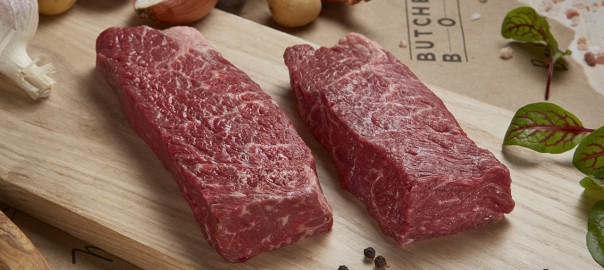This is a guest post from ButcherBox influencers Aniela and Jerzy Gregorek, developers of The Happy Body. Aniela and Jerzy came to the U.S. from Poland in 1986 as political refugees during the Solidarity Movement. As a professional athlete, Aniela has won five World Weightlifting Championships and established six world records. Jerzy has won four World Weightlifting Championships and established one world record. They have also been professional coaches and personal trainers since coming to this country. In a recent TED talk, Tim Ferriss described Jerzy like this: “Of the 10,000-plus people I’ve met in my life, I would put him in the top 10, in terms of success and happiness.”
Have certain cultures developed the best way of eating? As the founders of The Happy Body Program, we recognize food as one of the three pillars of a healthy lifestyle, and we have given a great deal of thought regarding how to make getting nutrition easy. But there are other considerations, and if we compare cultures that are known for refined eating practices, we can take the best from each.
The French tend to enjoy everything—good wine, chocolate, baguettes, pastries, butter, cheese, rich sauces, and delicacies. The magic comes from controlling the portion while also eating slowly and savoring every bite. This is why so many French people stay slim but don’t feel deprived; they practice moderation and sensuality.
The Japanese have another way of eating, which involves quality and careful preparation and presentation. Eschewing sweets, the Japanese diet focuses on lots of fish and seafood, seaweeds, fresh and pickled vegetables, and rice. Artfully presented fruit is usually the desert. The Japanese culture also has the concept of “hara hachi bu,” which means stopping when you’re just under-full, just around 80%. In this way, they’re aware of not just what they’re eating but how they’re eating, embracing beauty and mindfulness.
In the Happy Body Program, we prefer fresh ingredients as opposed to processed products and strategic food preparation in order to simplify cooking as opposed to involved, demanding recipes. By using seasonal ingredients and combining them in creative ways, we have a sense of freedom in how we eat, even though we stick mainly to healthful foods and avoid empty calories.

Happy Body practitioners also pay attention to where food comes from and how it was produced or created. Caring about how to maintain a healthy environment and sustain humane, organic practices that nurture animals or fruit and vegetables for the table is a priority.
For us, the most important word for food is knowing — knowing exactly how much to eat to lose, maintain or gain weight. Also important is where it comes from, how to prepare it simply and beautifully, and how to consume in a healthy way, for both ourselves and the planet. “What You Eat You Become” and “Food is Medicine” are our mottos. The better the quality of the food we eat, the healthier our bodies become, and so does our life. We can enjoy chocolate, potatoes, steak, and vodka as well as vegetables and fruits without obsessing or needing to be French or Japanese, always knowing how much is enough.
For more from Aniela and Jerzy, check out The Happy Body.



